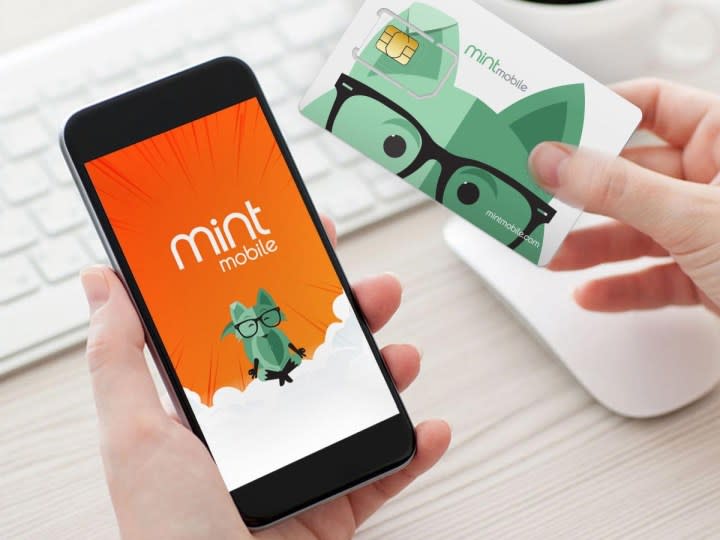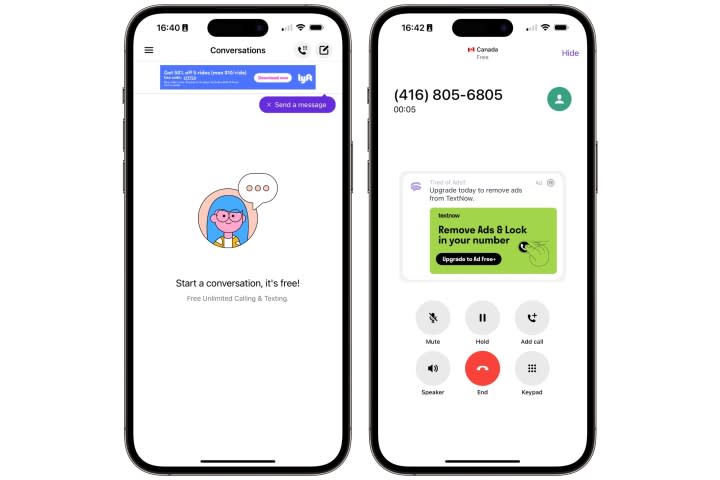When it comes to performance, quality, and reliability, T-Mobile is undoubtedly one of the best carriers in the U.S. It offers the fastest speeds and the broadest coverage with reasonably priced plans that include quite a few perks.
However, that may still add up to more than you want to pay; top-notch performance comes with a higher price tag attached. The good news is that T-Mobile is far from the only game in town. In addition to the other two of the big three U.S. carriers — AT&T and Verizon — there are dozens of Mobile Virtual Network Operators (MVNOs) that piggyback on the big carrier networks with more affordable plans that offer the same coverage and great performance at a fraction of the price. You’ll get fewer perks, and customer service may not be as responsive, but those may be reasonable tradeoffs for how much you’ll save.
So, if you find T-Mobile’s Magenta and Go5G plans a bit rich for your blood, here are five alternatives worth considering.
Metro by T-Mobile
As the name suggests, Metro is a subsidiary brand of T-Mobile that offers prepaid 5G service. When T-Mobile launched Metro, one of its goals was to remove the stigma surrounding prepaid plans by providing solid coverage on a quality network with a great selection of devices. Metro customers get full access to T-Mobile’s 5G Ultra Capacity network, with the caveat being that you might encounter slower performance during busy periods as T-Mobile customers get priority access.
However, T-Mobile calls its network Ultra Capacity for a reason, so you’ll rarely encounter congestion unless you live in a rural area that T-Mobile’s enhanced 5G services have yet to reach. Still, with over 300 million people already covered and T-Mobile continuing to expand, it’s getting pretty hard to find pockets where its best 5G service isn’t available — and it’s equally challenging to find too many complaints about performance. You may not see the same high numbers appearing on speed test apps, but it’s usually more than sufficient for what most people need. T-Mobile also promises that it won’t start deprioritizing Metro customers until they reach 35GB of data in a given month.
Regarding pricing, Metro isn’t the cheapest prepaid option out there, but it offers some good bang for your buck. Unlimited plans start at $50 per month and include 8GB of hotspot data, a Basic Google One plan with 100GB of storage, and a one-year subscription to VIX Premium. If you don’t need unlimited data, there’s a $40/month plan that provides 10GB of high-speed 5G data, after which you’ll be throttled to 128kbps. All plans also include the same T-Mobile Tuesdays perks that T-Mobile customers get, plus T-Mobile’s free ScamShield app.
Another great thing about Metro is that it’s not strictly a bring-your-own-device (BYOD) carrier. While you can certainly join with your existing phone, Metro offers some good deals on the best mainstream smartphones, plus upgrade eligibility every 12 months.
Mint Mobile

Mint Mobile is still the market leader when it comes to affordable unlimited data plans, especially if you’re willing to pay more upfront. New customers can get a three-month trial for only $45 ($15/month), after which you can renew for as little as $30/month if you pay for a whole year in advance. You can also opt to renew for three or six months if you don’t want to shell out as much money right away.
Like Metro, Mint Mobile runs on the T-Mobile network, and customers get access to the carrier’s 5G UC network, although your smartphone may not show it in the status bar. In this case, “Unlimited” works out to 40GB every month at maximum speeds of up to 320Mbps, with the fine print noting that you’ll experience “lower speeds” if you go over. Mint Mobile also offers more affordable 5GB, 15GB, and 20GB plans with the same terms for those who don’t plan to use as much data so that you can get on board for as little as $15/month.
Since Mint Mobile is all about affordability, you don’t get any extra perks outside the plan itself. There’s a Mobile Hotspot capability that draws from your data bucket and gets capped at 10GB per month even if you’re on a higher plan, plus free calling to Canada and Mexico and free texting to over 190 countries.
You can bring your own device to Mint Mobile or upgrade to a new one with no hidden fees or commitments. Mint sells new phones at full price or with monthly financing through Affirm, although some small sales show up occasionally if you’re willing to sign up for a longer-term plan.
Visible

While T-Mobile’s network is generally considered the best among the U.S. carriers, that only applies if you’re fortunate enough to have good coverage. If not, then even the best MVNOs that use the T-Mobile network won’t do you much good. While the obvious choice might be to opt for a rival carrier like Verizon, which often has excellent coverage and speeds in major urban centers, there’s another much more affordable option.
That’s Visible, which is to Verizon what Metro is to T-Mobile: a more affordable prepaid carrier owned by a bigger brand. For as little as $25 per month, you can get access to Verizon’s 5G network, which means solid and reliable nationwide coverage, plus unlimited data and unlimited talking and texting in the U.S. and to Canada and Mexico. There’s also a mobile hotspot, but it’s capped at 10Mbps speeds.
While standard 5G speeds are likely enough for most folks, if you want to take things up a notch, $45 per month will get you Visible+, which provides access to Verizon’s much faster 5G Ultra Wideband network with 50GB of “premium” data each month at top speeds, plus up to 2GB per day of full-speed data roaming in Canada and Mexico. If you want to pick up a new phone at the same time, Visible also offers a selection of phones that can be purchased outright or financed through Affirm.
Visible has also recently taken a page out of Mint’s book, offering deep discounts if you pay for an entire year in advance. This brings the standard Visible plan down to $22.92/month by paying $295 upfront. That will save you $25 over the course of a year, but the Visible+ plan gets even more attractive, costing only $32.92/month if you’re willing to shell out $395, for a total annual savings of $145. The discount carrier also offers a unique Connection Protection program for all members that will provide service credits of $25 per month to help those facing layoffs stay connected.
Google Fi

Google is into all sorts of things these days, so it’s probably no surprise that it also provides one of the best prepaid wireless services available, and that’s especially true if you regularly travel the globe.
While Google Fi may seem like an obvious choice for Google fans, its hidden superpower is in its generous international data availability. While it’s not hard to find plans that will let you roam in Canada and Mexico, Google Fi’s $65/month Unlimited Plus plan will take your unlimited data allotment to more than 200 countries and regions around the world, along with free Wi-Fi calling to North America so you can stay in touch with the folks at home.
While the “unlimited” data comes with the usual asterisk — speeds are slowed down after the first 50GB each month — its data limits apply globally, so you can use your phone wherever you happen to be with no need to worry about being slowed down by a lower cap. Mobile Hotspot data also follows the same rules, and you can add up to four tablets and use the same data at no extra charge. In short, you get 50GB of high-speed data per month no matter how or where you use it. Google Fi runs on the expansive T-Mobile network in the U.S., so you should get great speeds and coverage in most parts of the country.
If you’re not a frequent traveler, you can save a few bucks by opting for the Google Fi Simply Unlimited plan instead, which provides 35GB of high-speed data and roaming in Canada and Mexico. However, you’ll only get 5GB of mobile hotspot data, no sharing with tablets or other data-only devices, and none of the Google One or YouTube perks that come with the premium plan.
Google Fi also offers a selection of phones that can be purchased outright or financed over 24 months through Google’s own financing. Naturally, Google offers the best deals on its own Pixel phones — you can get the Pixel 8a and Pixel 8 for free right now as long as you stay signed up for two years — and while Google Fi will work fine on an iPhone, don’t expect Google to sell you one.
TextNow

Just because you’re on a tight budget doesn’t mean you must give up basic wireless connectivity. At least, that’s the philosophy behind TextNow’s free ad-supported 5G plans.
While TextNow is most often associated with getting a free second number, it’s actually an MVNO in its own right. It’s strictly a bring-your-own-device (BYOD) carrier, but all you need to do is order a $5 SIM card and you’ll be able to make calls and place texts for free.
The catch is that all calls and texts are handled through the TextNow app rather than your usual messaging and phone apps. TextNow offers essentially a data-only plan that routes calls over the internet rather than a cellular network. This is also how TextNow can provide its services at zero cost; the in-app ads pay for everything.
However, what’s great about TextNow is that it now offers a Free Essential Data program designed to let you stay connected to key services on the go at no cost. This includes navigation apps like Apple Maps, Google Maps, and Waze, a relatively long list of email apps from AOL to Zoho Mail, and ridesharing apps like Uber and Lyft. Sadly, there are no bike-sharing apps here yet, but TextNow says it’s working on expanding that list.
TextNow also offers data passes for those occasions when you need full 5G data access, but if you’re doing that regularly, you’re far better off opting for another MVNO. The main advantage of TextNow is that it will keep you connected for a minimal amount of money. At its cheapest, that’s a one-time $5 expenditure for a SIM card. However, if maintaining a consistent phone number is critical, it’s a good idea to sign up for a premium number for $5/month, as TextNow recycles its free numbers if they’re unused for more than a couple of days. That won’t happen as long as you use the number for calling and texting daily, but $5 is still a small price to pay to ensure you have a number you won’t lose.
Signup bonus from




